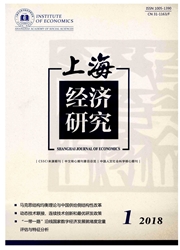

 中文摘要:
中文摘要:
该文利用1997-2012年中国省际碳排放数据,利用社会网络分析(SNA)方法对中国省际碳排放的空间网络结构及其效应进行了实证考察,研究发现:1中国省际碳排放的空间关联关系呈网络结构形态,样本考察期内,碳排放的空间关联关系逐渐增多,等级森严的网络结构逐渐被打破,网络效率呈近似"V"型的变化趋势。2沪、津、苏、浙、粤、京、鲁等省份位于网络的中心位置,容易对其他省份之间碳排放的空间关联关系产生影响,使得中国省际碳排放的空间网络呈现出典型的"中心-边缘"结构。3网络中京津冀地区、长三角地区为主受损聚类,长中游地区、珠三角地区为经纪人聚类,能源丰富的东北、西北地区、西南地区为受益聚类。4碳排放空间关联的整体网络密度的提高,网络等级结构的打破,减少聚类内省际碳排放均能显著降低碳排放强度和省际碳排放强度差异,提高碳排放的空间公平性。而个体网络中心性的提高对减少碳排放强度具有明显的促进作用。碳排放空间关联的网络结构对未来我国碳减排目标的实现带来了严峻挑战,但也为新时期区域协同发展战略的实施,跨区域协同减排机制的构建创造了有利条件。
 英文摘要:
英文摘要:
This paper exploit 1997-2012 provincial emissions data, and utilize modified gravity models to calculate Provincial emissions spillover relations, use social network analysis paradigm to analyze the provincial spatial structure characteristics and its effects of carbon emissions in China. The study finds are. (1)China provincial carbon emissions spillover relations render out network structure, within study period, carbon emissions spatial network density gradually increases, carbon emissions spatial network relations scale is rising; carbon emissions spatial network Hierarchy gradually declines, carbon emissions spatial network Hierarchical structure was gradually break carbon emissions spatial network efficiency renders out approximate "v" type changes trend, where carbon emissions spatial spillover relations within clusters is increasing during rise phase, and carbon emissions spatial spillover relations in different clusters is increasing during descent phase. (2)Shanghai, Tianjin, Jiangsu, Zhejiang, Guangdong, Beijing and Shandong are in the center of provincial emissions spatial network, that can better control over other carbon emission spatial spillover relations between the provinces, while carbon emissions spatial spillover relations to the center province is more than others, so China's spatial network of provincial carbon emissions presents a typical " Center-periphery" structure. (3)In the provincial network of carbon emissions in China, Beijing, Tianjin and Hebei and its neighboring provinces, the Yangtze River Delta areas is damaged cluster, the middle areas of the Yangtze River and the Pearl River Delta region is the broker cluster, energy-rich region in Northeast and Northwest and Southwest of China is benefit cluster, there are lots of spatial spillover relations among clusters. (4) Carbon emissions overall network density increased, network level reduction as well as reducing network efficiency can significantly reduce carbon intensity, interprovincial differences in c
 同期刊论文项目
同期刊论文项目
 同项目期刊论文
同项目期刊论文
 期刊信息
期刊信息
